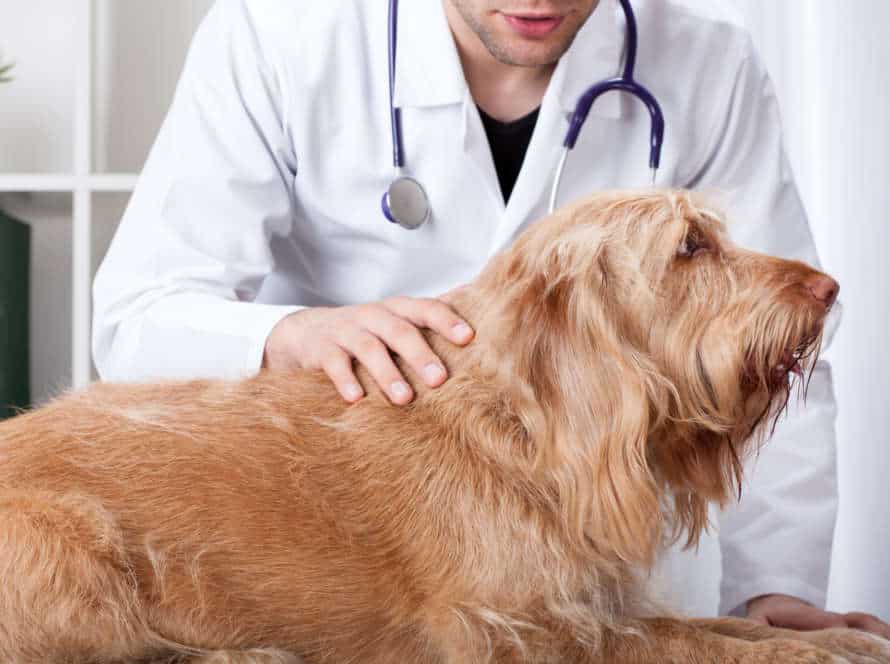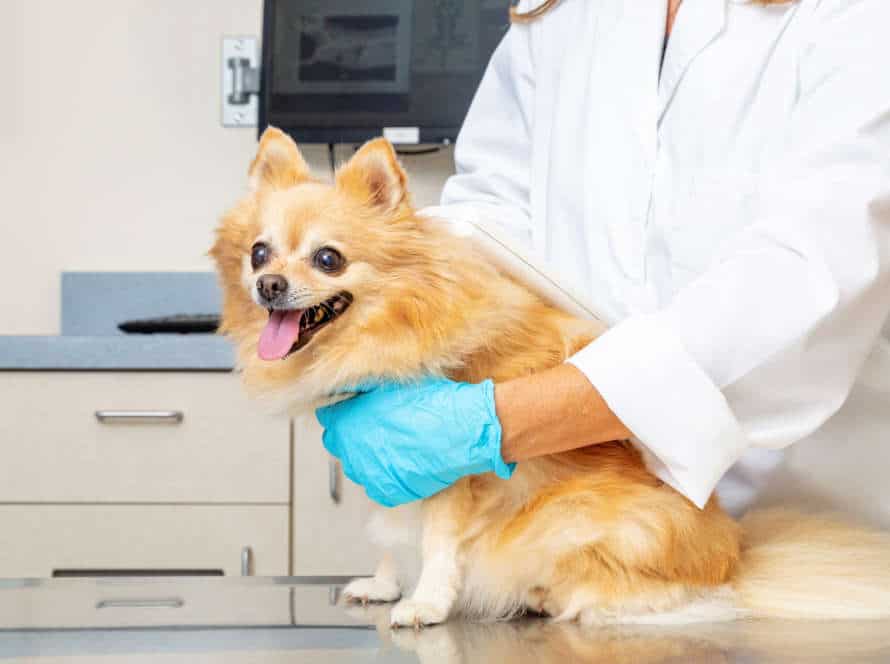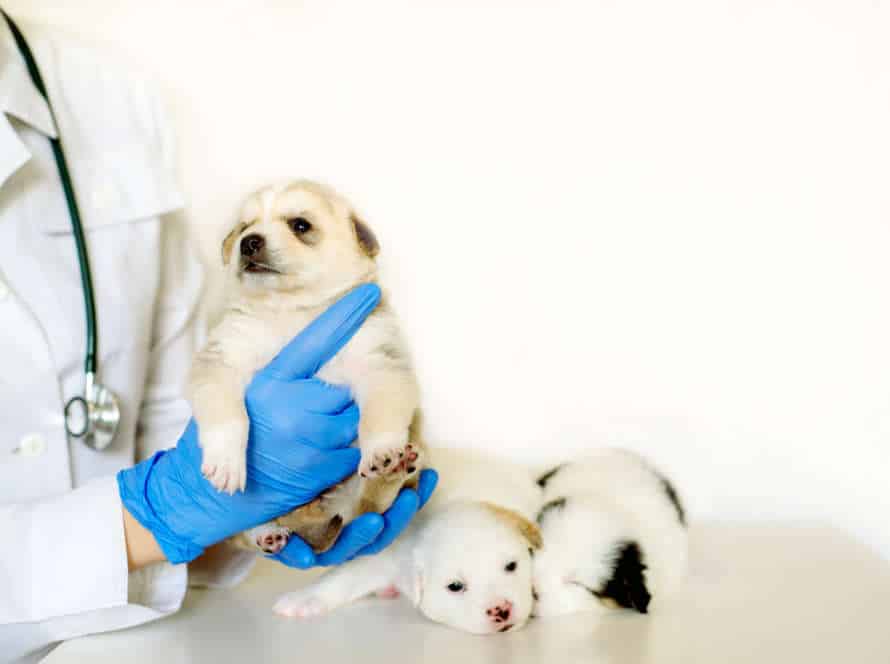Emergency Preparedness: Caring for Your Dog in a Crisis
In a crisis, it’s important to have an emergency plan for your pup, too! Here are some tips to help you and your furry friend be prepared for the worst:
Create an emergency kit for your dog. It should include:
- Food and water for at least three days.
- Meds, first aid stuff, and vaccination records.
- A leash, collar with ID tags, and a carrier or crate.
- Waste bags, towels, and blankets.
- An updated list of emergency contacts – your pet’s vet, and some friends/family who can look after your pet if you can’t.
Make a back-up plan in case you and your doggo have to evacuate – think of a designated meeting place and how you’ll get there.
Keep your pup on a leash or in a carrier when in crisis. Stay calm and reassure them to avoid fear or stress.
Pro Tip: Check your emergency kit regularly, replace expired items, and update your pet’s ID tags if your contact info changes.
Disaster Planning for Dog Owners
When prepping for an emergency with your pup, planning ahead is key. Get an identification tag and gather the right supplies. Have an evacuation plan ready to go! Here are the best ways to plan for a crisis involving your four-legged family member.
Emergency Contact List
Creating an emergency contact list is a must for any dog owner. In a crisis, it’s super important to have a plan in place for your pup’s safety. Here’s how to make it:
- Write down essential phone numbers – like your vet’s office, local animal shelters and 24-hour emergency clinics in your area.
- Include a trusted friend or family member who can look after your pup if you can’t.
- Add details of pet-friendly hotels and temporary shelters, in case of evacuation.
- Keep a physical copy of the list in a visible spot, plus a digital copy on your phone or email.
- Review and update the list often, to make sure it’s correct.
Take action now – being prepared is the key to protecting your furry friend in an emergency.
Determine Your Emergency Supply Needs
Crisis times call for planning. Make sure you have what your pup needs! Here are some essentials for an emergency kit:
- Water: Have enough clean water for a week.
- Food: Pack a week’s supply of food and treats.
- Medications and Records: Keep copies of your dog’s medical records in a waterproof container. Also, pack any necessary medications.
- First Aid Kit: Gather gauze, antiseptic wipes, tweezers and other important items.
- Leash and Harness: Bring a secure leash and harness.
- Weather-dependent: Depending on the weather, pack a coat, blanket or cooling pad.
Plan Ahead! Don’t wait until the last minute to keep your pet safe. Be prepared!
Create a Temporary Safe Space for Your Dog
Creating a safe space for your pup in times of crisis is a must. Here’s how to do it:
- Pick a spot that is far from danger and has enough room for your pet to move around.
- Fashion a bed using towels or blankets.
- Place a bowl of clean water and a small portion of food close by.
- Ensure that the area has good ventilation.
- Make sure your dog is wearing ID tags with your contact info.
- Keep their leash or carrier close, in case you need to go quickly.
- Bring your pet along if you must leave home or find someone who can take care of them until it’s all over.
- Remain calm and comfort your pup during this tough time.
- Pro tip: Get a head start by practicing making a safe space for your dog before any disaster strikes.
Essential Items to Include in Your Dog’s Emergency Kit
It’s key to be ready for an emergency, esp. for our furry friends. If you have a pup, it’s vital to have a customized emergency kit. What do you need? Here are the must-haves!
Food and Water Supplies
In case of an emergency, it’s important to have a dog emergency kit that is well-stocked with food and water.
Essential items to include:
- Water: Pack enough for 3 days. It depends on size, age, and activity level. Extra is a must.
- Food: Pack at least 3 days of regular food. Rotate every 2-3 months.
- Treats & Supplements: Favorite treats and any needed vitamins/meds.
- Bowls: Get some collapsible, lightweight ones.
Pro Tip: Put supplies in a waterproof and easy-to-carry backpack or bag. Quickly grab it in an emergency.
Medications and Medical Records
Medications and medical records are must-haves for your pup’s emergency kit. You need these items to give them proper care in times of crisis.
Essentials:
- Medications – Prescription meds, allergy meds, and any other needed.
- Medical records – Vaccination info, medical history, vet contact.
- First aid things – Bandages, gauze, antiseptic, scissors, and more.
- Food and water – Pack 3 days’ worth.
- Comfort items – A toy or blanket to keep them calm.
Remember to update the kit regularly. Pro tip: Make it easy to access and let family/caretakers know where it is.
Comfort Items
Emergencies can come out of the blue. As a responsible pet parent, it’s essential to have an emergency kit ready for your furry buddy. This kit should include some items that make them feel secure in a tense situation.
Here are the must-have comfort items for your dog’s emergency kit:
- A beloved toy or blanket: To give them a feeling of familiarity and comfort in a strange or stressful setting.
- Comfort treats: To give them extra inspiration and motivation when things get tough.
- Medication: In case they need medicine, make sure you include it, plus instructions about usage and dosage.
- Harness or leash: To keep them safe during transport or evacuation.
- Familiar scent: Include something that smells like home, like a piece of clothing or toy, to ease their worries in an unfamiliar place.
Remember to always check and update their emergency kit, so it’s ready for any emergency. Pro tip: Make duplicates and keep them in different places, in case you need to get to them quickly.
Evacuation Plans for Dogs
Emergency! Evacuating? Remember your pet! Have a plan to keep them safe. What should you do? Here’s a guide:
- Make sure your pet has a collar and tags with up-to-date contact information.
- Store important documents like vet records in a waterproof bag.
- Make sure your pet is microchipped and the chip is registered.
- Have a list of emergency contacts and boarding facilities.
- Pack enough food, water, and medication for your pet.
- Have a carrier and leash, plus a favorite toy or blanket.
Understand Your Local Evacuation Protocols
Understand your local evac protocols to make an emergency plan for your pup during a crisis. Here’s how:
-
Contact the local gov’s emergency management office, animal control, or shelter to learn their plans for pets.
-
Find several safe places to evacuate with your dog, like family/friends, pet-friendly hotels/motels, or boarding facilities.
-
Create a pet emergency kit with food/water, meds, medical records, first aid, leash/collar, and blankets/towels.
-
Ensure your dog has ID (collar tags or microchip) and have a current photo of them on hand.
-
Pro tip: In times of crisis, stay calm and focused on your emergency plan to keep you and your furry pal safe.
Preparing Your Dog for Evacuation
Prepping your pup for evacuation is vital for emergency readiness. Here are some tips to assist you in getting your furry pal out safe and sound:
- Create an emergency kit for your pet. It should contain food, water, medicine, a foldable bowl, leash, and a crate/carrier.
- Microchip your dog and have an up-to-date ID tag with your contact info on it.
- Before an emergency, look into dog-friendly evacuation options. Hotels or shelters that accept pets in times of crisis.
- Train your pup to react to emergency commands. Practice evacuation drills to be prepared for actual emergencies.
- Keep a photo of your dog. This can be shown to rescuers or shelter staff if your pet gets lost.
These steps can help ensure your dog’s safety and wellbeing during an emergency.
Transportation and Finding Pet-Friendly Accommodations
Transport and finding pet-friendly sleeping spots are essential parts of a plan for dog owners in the event of an emergency. Here are some tips to help you look after your pup in a crisis:
Transportation:
- Get a strong carrier, leash, collar/harness, and ID tags for your dog.
- Teach your pup to cope with the carrier and practise loading and unloading in a car.
- Look into pet-friendly travelling like buses, trains, and taxis.
- Check with local officials about animal transport during a disaster.
Finding pet-friendly accommodations:
- Do some research into pet-friendly hotels, motels, and shelters beforehand.
- Ask friends, family, and boarding facilities if they can house your dog for a while.
- Make a list of pet-friendly options and their contact info on hand.
- During a crisis, stay informed about orders to evacuate and emergency shelters that allow pets.
Pro tip: Put together an emergency kit for pets with food, water, medications, medical records, and items to make them feel comfortable – just in case of an unexpected evacuation.
After the Crisis: Pet Recovery
Once an emergency or disaster occurs, you may not be able to access your home right away. You may even need expert help to make sure it’s safe to enter. When you are finally allowed in, the first thing to do is look for your pets. This section will provide tips on how to recover your pet and make sure they are safe after a crisis.
Reuniting with Your Dog
Reconnecting with your pup after a crisis can be intense. Here are some tips to make for a successful reunion:
- Contact those in charge of animal shelters and the government. Give them a thorough description of your pup.
- Make posters with a recent photo of your pup and your contact info, and post them around the missing pup’s area.
- Social media can help too – use it to spread the word and reach out to rescue organizations and communities.
- Search surrounding areas: parks, streets, neighborhoods.
- If your pup has a microchip, call the registry to update your details and report them as lost.
- Keep your phone and pup’s tags with you at all times. Be ready to act if someone finds them.
- Most importantly, stay hopeful and search until you’re reunited with your furry friend!
Assessing Your Dog’s Health Needs
Assessing your pup’s health needs is a key part of prepping for an unexpected event and helping them to heal post-crisis. Here are some must-haves to think about:
- Nutrition: A well-balanced diet is essential for your dog’s overall well-being. Stock up on enough food to last.
- Meds: Have enough meds on hand if your dog needs them, for several weeks.
- Water: Keep fresh, clean water available for them at all times. Store some water for your pet with other emergency supplies.
- First aid: Have a first aid kit with things such as bandages, antiseptic, and tweezers, in case of injuries during the crisis.
- Mental health: Dogs experience stress and anxiety like humans. Provide a safe and comfortable environment, and lots of love and affection.
Pro-tip: Regular vet visits can help you assess your dog’s health needs prior to an emergency.
Working with Animal Welfare Organizations
Assist pet owners in an emergency crisis, like a pandemic or natural disaster? Animal welfare organizations can help! Here are 4 ways:
- Give shelter and care to displaced pets.
- Provide food, water, and medical attention to pets in need.
- Reunite lost pets through databases and social media.
- Give post-crisis resources, like counseling and financial help for vet bills.
In planning for emergency preparedness, it’s important to care for your dog. Have a ready-to-go bag with the essentials – food, water, medicines, and ID tags. Train your dog on evacuation protocols too! Pro Tip: Reach out to local animal welfare organizations to learn how they can help you keep your pet safe.
Frequently Asked Questions
1. What should I prepare for my dog during an emergency?
It is important to have an emergency kit for your dog that includes food, water, medications, a leash, collar and tags, and a carrier or crate if necessary. You should also have important documents for your dog, such as vaccination records, identification information and any medical information.
2. What should I do if I need to evacuate my home with my dog?
If you need to evacuate your home during a crisis, take your dog with you. Make sure your dog is on a leash, and have a carrier or crate ready if necessary. Be sure to bring your dog’s emergency kit and any important documents with you. Also, make sure you know the location of pet-friendly shelters in your area.
3. How can I prepare my dog for an emergency?
To prepare your dog for an emergency, train them to be comfortable with their carrier or crate, and practice evacuation drills with your dog. Have a plan in place for who will care for your dog if you are not able to. And make sure your dog is up-to-date on all vaccinations and has proper identification.
4. What should I do if my dog is lost during an emergency?
If your dog is lost during an emergency, contact local animal shelters and rescue organizations in the area. Post flyers and share information on social media. Make sure your dog’s identification information is up-to-date and consider getting a microchip for additional identification.
5. Can my dog be trained to assist during an emergency?
Some dogs can be trained to assist during emergencies, such as search and rescue dogs or therapy dogs. If you are interested in training your dog to assist during emergencies, consult with a professional trainer who specializes in this area.
6. How can I help other dogs in my community during an emergency?
You can help other dogs in your community during an emergency by volunteering with local animal shelters or rescue organizations. You can also donate supplies or money to these organizations. And remember to always be prepared and willing to assist other pet owners in your community during a crisis.







